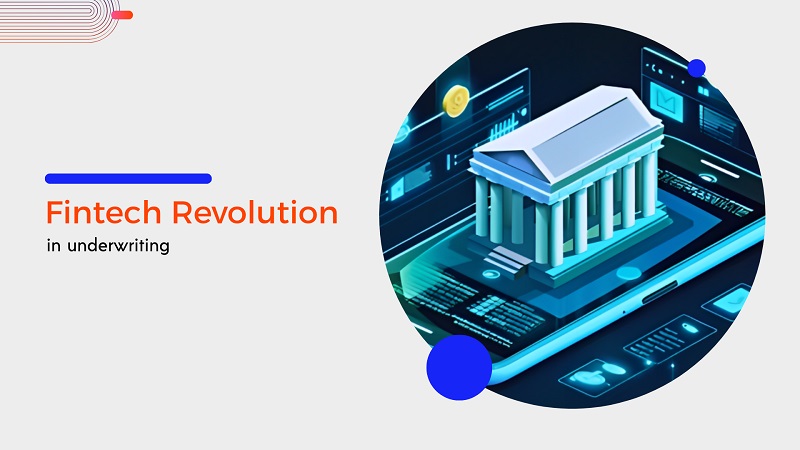The fintech revolution is reshaping the financial services industry, and nowhere is this transformation more evident than in underwriting. Traditionally, underwriting has been a labor-intensive process, relying on a narrow set of factors such as credit scores, income verification, and financial history. However, fintech innovation is introducing new technologies, including artificial intelligence (AI), machine learning (ML), and big data analytics, that are revolutionizing how underwriting is conducted. These advancements are making the underwriting process faster, more efficient, and inclusive, but they also present challenges that need to be considered.
The Traditional Underwriting Process
In traditional underwriting, financial institutions assess the creditworthiness of borrowers by evaluating a fixed set of data points, primarily focused on:
- Credit scores
- Income verification
- Debt-to-income ratio
- Collateral and assets
While these methods are tried and tested, they have limitations, especially for people who lack traditional credit history, such as the unbanked, gig workers, or first-time borrowers. The reliance on conventional credit reports often excludes large segments of the population, leaving millions without access to formal credit.
How Fintech is Revolutionizing Underwriting
Fintech companies are leveraging new technologies to modernize underwriting by making it faster, more inclusive, and data-driven. These are some of the most impactful changes:
1. AI and Machine Learning in Credit Scoring
AI and ML algorithms are being used to develop alternative credit scoring models that go beyond traditional metrics. Instead of relying solely on credit scores, AI models analyze a range of alternative data sources, including:
- Social media activity
- Utility payments
- Mobile phone usage
- E-commerce behavior
- Rental payments
These models are designed to identify creditworthiness by analyzing patterns in behavior and financial responsibility, offering a more holistic view of a borrower’s ability to repay a loan.
Advantages:
- Inclusivity: AI-driven models can provide credit access to those with little or no formal credit history, especially in emerging markets or among gig economy workers.
- Speed and Efficiency: Machine learning algorithms can process large volumes of data in real time, allowing lenders to approve loans much faster than traditional methods.
- Precision: AI can help predict default risks more accurately by identifying trends and risks that may be overlooked by traditional scoring methods.
Disadvantages:
- Bias in Algorithms: If not properly managed, AI algorithms may inherit biases present in the data they are trained on, leading to discriminatory lending decisions.
- Data Privacy Concerns: The use of personal data from non-financial sources, such as social media, raises privacy concerns about how lenders access and use this information.
- Over-Reliance on Automation: While AI can process data quickly, fully automating underwriting without human oversight may lead to misjudgments or overlook contextual factors that affect a borrower’s creditworthiness.
2. Big Data Analytics for Enhanced Decision-Making
Big data is transforming the underwriting process by allowing lenders to analyze a vast amount of information from diverse data sources. By using big data analytics, fintech firms can:
- Identify trends and patterns in customer behavior
- Understand economic conditions in real-time
- Offer more dynamic and responsive lending products
For example, big data can be used to assess a borrower’s spending habits or track their cash flow to make better lending decisions. It can also help lenders adjust interest rates based on real-time risk assessments.
Advantages:
- Broader Data Points: Big data allows lenders to consider non-traditional factors when assessing creditworthiness, improving inclusivity.
- Personalized Lending: By analyzing individual financial behavior, lenders can offer more customized loan products that meet borrowers’ specific needs.
- Improved Risk Management: Big data analytics help lenders anticipate macroeconomic shifts and adjust their risk models accordingly, leading to more stable portfolios.
Disadvantages:
- Data Overload: The sheer volume of data can be overwhelming, and if not properly managed, it could lead to analysis paralysis or erroneous conclusions.
- Accuracy of Data Sources: The accuracy and reliability of data from non-traditional sources, such as social media or online transactions, may vary, which could impact the quality of underwriting decisions.
- Regulatory Challenges: Using alternative data sources raises questions around data ownership, consent, and compliance with privacy laws, particularly in highly regulated markets.
3. Automated Underwriting and Instant Loan Approvals
One of the most transformative changes brought by fintech is the rise of automated underwriting systems, which use AI and machine learning to assess credit risk and make loan decisions almost instantly.
Automated underwriting allows for instant loan approvals, significantly reducing the time it takes to process loan applications. These systems are commonly used in personal loans, small business lending, and consumer finance through platforms that offer instant approvals based on algorithmic assessments.
Advantages:
- Faster Loan Processing: Automated systems can process loans within minutes, compared to days or weeks in traditional underwriting.
- Cost Efficiency: By reducing the need for manual processing, lenders can cut down on operational costs, passing on savings to consumers in the form of lower interest rates or fees.
- Scalability: Automated underwriting allows fintech companies to scale their lending operations quickly without the need for extensive manual oversight.
Disadvantages:
- Lack of Human Judgment: Automated systems may lack the nuanced judgment of human underwriters, especially for complex loan applications that require a deep understanding of the borrower’s situation.
- Technical Failures: Reliance on automated systems can create vulnerabilities to technical failures or cybersecurity threats, which could disrupt lending services.
- Regulatory Scrutiny: Automated underwriting processes need to comply with regulatory frameworks, and as they evolve, regulators may require more transparency around how decisions are made.
The Future of Fintech Underwriting: What Lies Ahead
As fintech underwriting continues to evolve, the future promises even more exciting innovations that could change the lending landscape further. Here are some potential developments to watch:
1. Blockchain and Decentralized Underwriting
Blockchain technology could introduce decentralized underwriting systems, where smart contracts and distributed ledgers allow lenders and borrowers to engage without intermediaries. Blockchain could enhance transparency, making it easier for lenders to verify borrower information and track loan agreements securely.
2. Greater Focus on Sustainability
In the future, fintech underwriting may incorporate sustainability metrics into the decision-making process. Lenders could assess the environmental and social impact of borrowers’ projects and businesses, leading to a rise in green loans and sustainability-linked finance.
3. Hybrid Models Combining AI and Human Expertise
While AI and automation are transforming underwriting, there is likely to be a move toward hybrid models that combine the efficiency of AI with the judgment and intuition of human underwriters. This approach would allow for more balanced decision-making, particularly for complex or high-risk loans.
Concluding Thoughts: Balancing Innovation with Responsibility
The fintech revolution in underwriting is bringing remarkable benefits to the lending industry, from enhanced inclusivity and faster loan approvals to cost efficiency and improved risk management. However, these innovations also come with challenges, including data privacy, regulatory concerns, and the risk of relying too heavily on algorithms.
For financial institutions, the road ahead involves balancing the power of fintech with the need for responsible lending practices. By integrating AI, big data, and automation with transparent and ethical decision-making, lenders can leverage fintech innovations while safeguarding the interests of borrowers and maintaining trust in the financial system.








